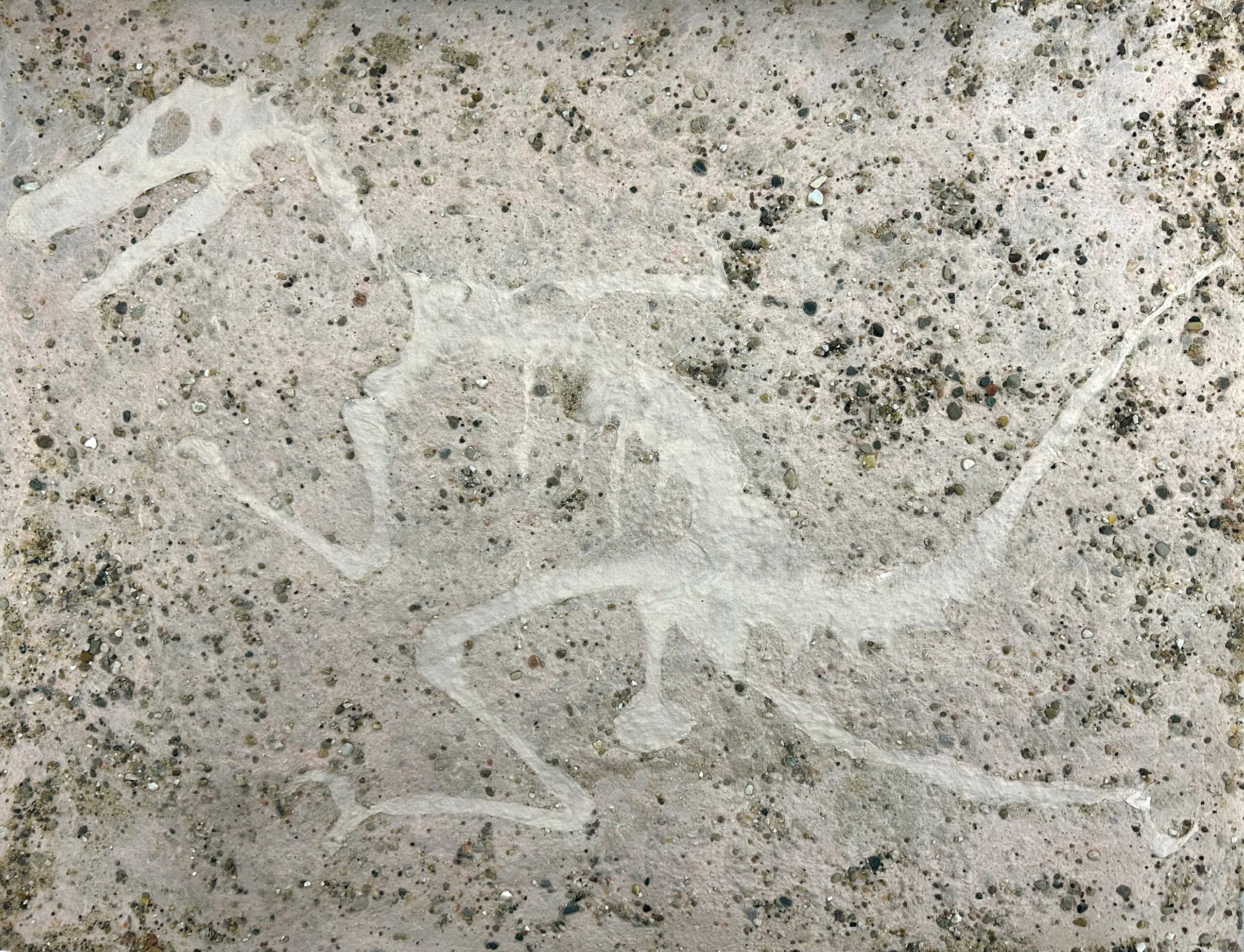Senior, Stamps School of Art & Design

Handmade Paper from Kozo Fibers, Pigments, and Sand
Abstract
Paleontologists provide us with artifacts and stories that have shaped our understanding of our world and its evolution. With my practice, I aim to take the information paleontologists provide us and convert it into visual representations that all will be able to understand regardless of their prior knowledge. Above all, I want to show the appreciation that I have for all the discoveries that have been made throughout the years.
To form this sheet, fibers were soaked for three days and cooked with soda ash for four hours to break down the bark and fibers. The fibers are then rinsed, plucked, and beaten until they become smooth and break into smaller strands. Beaten fibers are then submerged in a bucket of cold water and agitated, this is to separate the fibers and prevent bunching. A formation aid called tororo aoi is then added to the bucket, this thickens the mixture and allows more time to form your sheet in the suketa. A suketa is a frame that forms and holds the washi that you are making. When thoroughly mixed, a small bowl is used to slowly pour your mixture into the suketa. As the mixture is being added the frame is moved in a circular motion to ensure even coverage. When you’re finished adding all of the fibers, the suketa is set in a flat area to let the sheet dry. After 36 hours the sheet can be removed from the suketa.
Paleontologists spend hours upon hours in the field looking for and collecting fossils to provide us with the story of our planet. They spend days, weeks, or even months prospecting the ground looking for hints of ancient life. After searching for such long periods, they then brush away at the surface hoping that what they found is actually a fossil. If they are successful, they then spend hours using awls and chisels to carefully extract the fossil from the quarry. Fossils are important to society as they allow us to watch the evolution and adaptation of plants and animals in their environments. I find that the evolution of dinosaurs specifically provides us with a plethora of information about the progress of our world and what our planet is capable of hosting. I simply look at fossils and paleontologists with awe and nothing but appreciation for all the stories that they provide us.
I made Velociraptor in Stone as an appreciation for the work of paleontologists and in an attempt to connect myself to them by ‘finding’ a fossil of my own. The amount of labor that goes into making a sheet of paper is not equivalent to that of finding and digging up fossils. Despite that, I feel as though I can create a connection through the act of papermaking.
